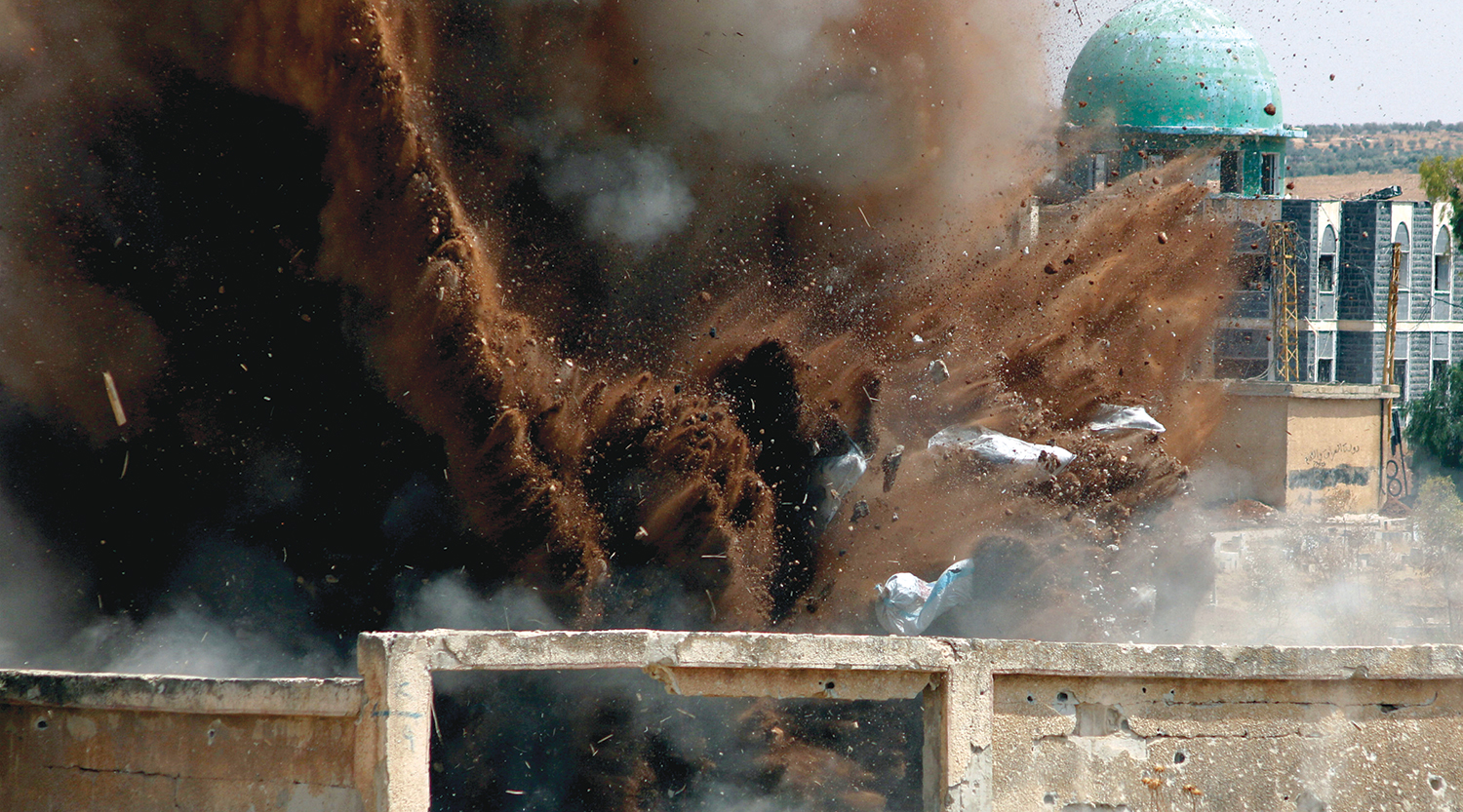

With relative calm in southwest Syria since a ceasefire was reached in early July, civil defence services in rebel-held Deraa have shifted focus to clearing unexploded cluster bombs left by air strikes.
Men in light blue vests set up yellow tape around any of the small, silver winged cylinders found, alongside red signs marked with skeleton symbols reading, “Danger! Unexploded ammunition!”
A specialist civil defence team, trained last year in Jordan to clear mines, has dealt with about 100 cluster bombs in Deraa and nearby villages this week alone, a team member said.
After the tape and signs are set up, rescue service members pile bags of dirt around the cluster bomb and place their own blue-and-white explosive cylinder inside, a red wire trailing from it.
The team, in protective gear, hide behind mounds of soil or buildings.
One man holding a trigger attached to the red wire warns his colleagues by radio.
Then a shower of dirt and rubble erupts, leaving one fewer unexploded bomb on Deraa’s streets.
“We faced a lot of difficulties from air strikes and bombs in open areas,” Hasan Fashtaki, a member of the unexploded ordnance team, said by phone. “But now because of the ceasefire and calm in the area, we’re working freely,” he added.
Deraa is located in a “de-escalation zone” agreed by the United States, Russia and Jordan as part of Washington’s first peacemaking effort in Syria under President Donald Trump after six years of civil war.
It has protected Deraa and surrounding areas from new bombardment, allowing the civil defence to focus on unexploded bombs, according to Fashtaki.
The team spent 20 days in Jordan in October training and learning to de-mine areas.
Bombs have been concentrated in areas that suffered heaviest bombardment including front lines and the southwestern village of Horan, Fashtaki said.
He did not know how many more unexploded bombs there were in the area or how long it will take to clear them.
“It could be that in two or three or four months time, we still would not have finished our work.”
Meanwhile, the Syrian army has reached the last IS-held town on the road to its besieged garrison in the east, a monitoring group said on Friday.
Government forces are on the outskirts of Al Sukhna, some 70 kilometres northeast of the famed ancient city of Palmyra, the Syrian Observatory for Human Rights said.
The town is the last on the desert road to the eastern city of Deir Ezzor, where a government garrison has held out under siege by the IS group since early 2015.
Al Sukhna and the oil and gas fields in the surrounding countryside have been held by IS since 2015.
“Heavy fighting is ongoing between the two sides, with regime artillery and rocket fire,” Observatory director Rami Abdel Rahman said.
He said Russian warplanes were supporting the government advance.
IS commanders fled into the surrounding mountains as the army neared the town, he added.
Since May, the army has been conducting a broad military campaign to recapture the vast desert that separates the capital Damascus from Deir Ezzor and other towns along the Euphrates Valley.
Already defeated in its Iraqi bastion of Mosul, IS is facing multiple assaults in Syria.
The US-backed Syrian Defence Forces now control more than half of its most important remaining stronghold Raqa.
— AFP
Oman Observer is now on the WhatsApp channel. Click here



